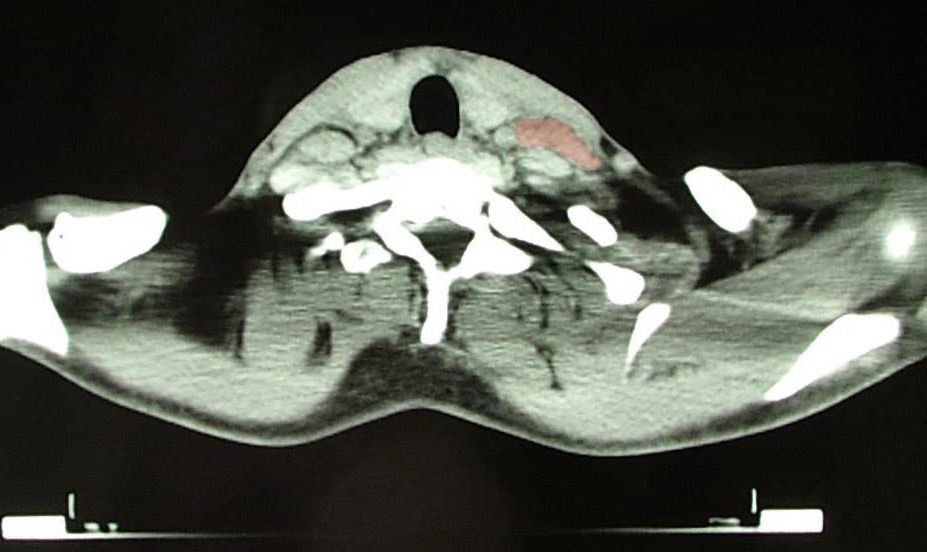
JHeuser / Wikimedia Commons
Brentuximab vedotin (BV) has shown “remarkable” efficacy when used after autologous stem-cell transplantation in patients with difficult-to-treat Hodgkin’s lymphoma.
Results of the phase III AETHERA trial, published in The Lancet
[1]
on 19 March 2015, show that BV — an antibody attached to a chemotherapy drug — improved progression-free survival to a median of 43 months versus 24 months with placebo.
“The bottom line is that BV is a very effective drug in poor-risk Hodgkin’s lymphoma and it spares patients from the harmful effects of further traditional chemotherapy by breaking down inside the cell resulting in less toxicity,” says lead author Craig Moskowitz, from Memorial Sloan Kettering Cancer Center, New York. “No medication available today has had such dramatic results in patients with hard-to-treat Hodgkin’s lymphoma.”
BV consists of an anti-CD30 antibody conjugated to a microtubule-disrupting drug, monomethyl auristatin E. Developed jointly by Seattle Genetics and Takeda, BV (marketed as Adcetris) has been approved for use in relapsed or refractory Hodgkin’s lymphoma and systemic anaplastic large cell lymphoma in 50 countries worldwide, including the United States in August 2011 and across Europe in October 2012.
In the AETHERA trial, 329 patients with unfavourable-risk relapsed or refractory Hodgkin’s lymphoma who had undergone autologous stem-cell transplantation were randomly assigned to receive 16 cycles of BV 1.8 mg/kg or placebo intravenously every three weeks.
The primary endpoint — progression-free survival — was significantly improved with active treatment versus placebo, with a hazard ratio of 0.57 (95% confidence interval [CI] 0.40–0.81; P=0.0013). At two years, progression-free survival was 63% (95% CI 55–70) with BV versus 51% (95% CI 43–59) with placebo. The three-year rate of overall survival exceeded 80%, which the researchers describe as “remarkable”.
The significant benefit of BV was consistent across clinically important subgroups, including primary refractory patients, patients who had relapsed within 12 months of first-line therapy and patients who relapsed after 12 months.
The most frequent adverse events in the BV group were peripheral sensory neuropathy (56% with BV versus 16% with placebo) and neutropenia (35% vs 12%). Most patients with BV-associated neuropathy experienced a resolution or improvement in symptoms with a median time to improvement of 23.4 weeks. At the time of analysis, 17% of patients had died in the BV group compared with 16% in the placebo group.
Writing in a linked comment article[2]
, Andreas Engert, from University Hospital of Cologne, Germany, highlights the current poor prognosis and lack of treatment options for patients who relapse after autologous stem-cell transplantation. The results “clearly show” that consolidation therapy with BV after transplantation improves the prognosis of Hodgkin’s lymphoma patients, he says.
“AETHERA is a positive study establishing a promising new treatment approach for patients with Hodgkin’s lymphoma at high risk for relapse,” says Engert. “We look forward to a better definition of patients with relapsed Hodgkin’s lymphoma who should receive consolidation treatment with BV.”
References
[1] Moskowitz CH, Nademanee A, Masszi T et al. Brentuximab vedotin as consolidation therapy after autologous stem-cell transplantation in patients with Hodgkin’s lymphoma at risk of relapse or progression (AETHERA): a randomised, double-blind, placebo-controlled, phase 3 trial. The Lancet 2015. doi:10.1016/S0140-6736(15)60165-9 1.
[2] Engert A. Hodgkin’s lymphoma: who needs consolidation treatment? The Lancet 2015. doi:10.1016/S0140-6736(15)60583-9.


